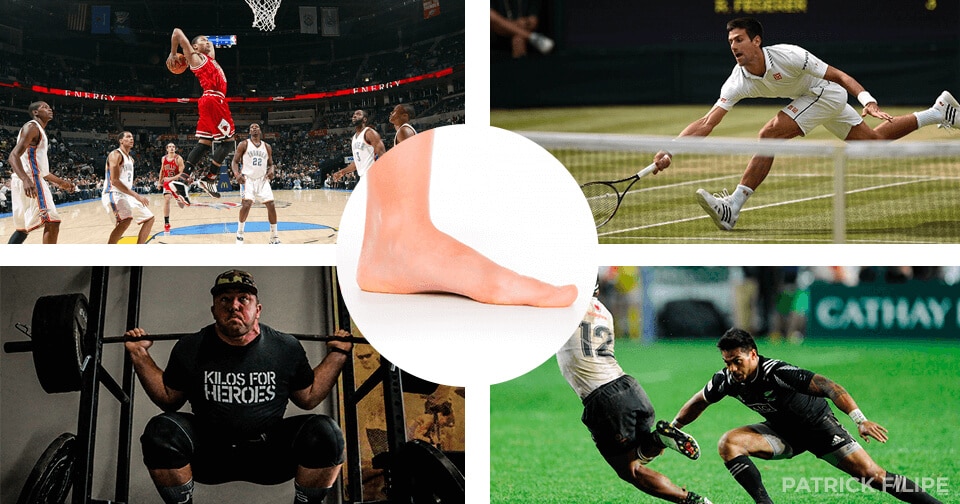The foot and ankle form the basis of support for the human body, providing the stability needed to assume a bipedal posture. The compromise of ankle mobility caused by posture adaptations to daily activities and the use of inadequate footwear (particularly high heels) may have implications for the execution of gestures characteristic of most sports, as well as for many exercises present in strength training programs.
How can restrictions on ankle dorsiflexion cause functional limitations that compromise sport performance and constitute a risk factor for injury?
- Limited dorsiflexion can cause changes in kinematics in the sagittal plane (decrease in flexion and excursion) and frontal plane (increase in dynamic valgus) of the knee joint during exercises such as squatting. The restriction in the sagittal plane also results in changes in the muscle activation patterns of the solear (increase) and quadriceps (decrease) during the eccentric phase of Crouching (Macrum et al., 2012). These conditions may make an individual more susceptible to overuse or acute knee injuries such as patellofemoral syndrome.
- Anterior cruciate ligament (ACL) injury usually occurs during participation in sporting activities through a non-contact mechanism involving a sudden change of direction, sudden stop, reception to the ground after a jump (or a combination of both). Restriction in dorsiflexion during reception to the ground is associated with lower knee flexion, higher ground reaction forces and consequently an increase in dynamic valgus (Fong et al., 2011). These biomechanical factors are interrelated, resulting in an increased risk of ACL injury.
- The Single Leg Squat Test (SLST) is commonly used to assess the dynamic valgus and consequently the potential risk of lower limb injury as well as the return to unrestricted sporting activity after reconstruction of the LCA. It is correlated with tasks such as reception to the ground after a jump, running and changes of direction. In a study (Mauntel et al., 2013) where the medial knee deviation during SSC is correlated with muscle activation and passive range of motion of the lower limb, the restriction in dorsiflexion was one of the aspects related to the medial knee deviation.
Therefore, strength and fitness training, rehabilitation and injury prevention programmes should take into account possible restrictions on ankle dorsiflexion with a view to reducing the incidence of lower limb injuries.
Patrick Filipe
References:
Macrum, E. Bell, D. Boling, M. Lewek, M. Padua, D. 2012. Effect of Limiting AnkleDorsiflexion Range of Motion on Lower Extremity Kinematics and Muscle-Activation
Patterns During a Squat. Journal of Sport Rehabilitation, 21, 144-150.
Fong CM, Blackburn JT, Norcross MF, McGrath M, Padua DA. 2011. Ankle-dorsiflexion range of motion and landing biomechanics. Journal of Athletic Training. 46(1):5–10.
Mauntel TC, Begalle RL, Cram TR, Frank BS, Hirth CJ, Blackburn T, Padua DA. 2013. The effects of lower extremity muscle activation and passive range of motion on single leg
squat performance. Journal of Strength and Conditioning Research 27(7)/1813-1823.






